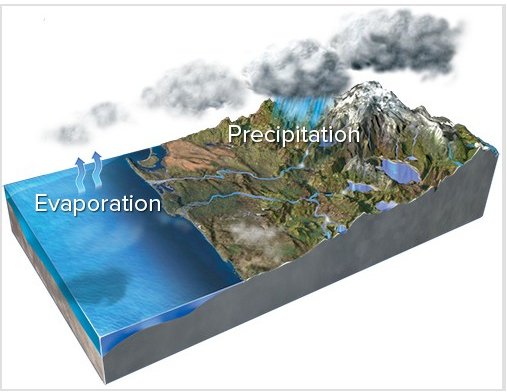What happens to different isotopes of oxygen in this figure?

A) Evaporation concentrates lighter isotopes in the resulting water vapor.
B) Precipitation forms ice that is enriched in heavier isotopes relative to seawater.
C) Melting of ice preferentially releases heavier isotopes back into the ocean.
D) All of these are correct.
A) Evaporation concentrates lighter isotopes in the resulting water vapor.
You might also like to view...
Daylight and nighttime hours are equal
A. during the equinoxes. B. in mid-January and mid-June. C. during the summer and winter solstices. D. They are never equal.
Based on the principle of Lateral Continuity, layers of rocks can be continuous over broad areas when first deposited, although erosion may later remove part of a layer.
a. true b. false
How is a volcanic neck different from a volcanic pipe?
A) Volcanic necks are longer and bring materials up from the mantle. B) Volcanic pipes connect to shallow magma chambers. C) Volcanic pipes are shorter. D) Volcanic necks are shorter and connect to shallow magma chambers.
If a marine animal has body fluids that have a lower salt content than the surrounding seawater, water will pass through the animal's body tissues from the ________ to the ________ because of ________.
A. outside; inside; osmosis B. outside; inside; electrolysis C. inside; outside; osmosis D. inside; outside; electrolysis E. None of these is correct; the salt moves, not the water.